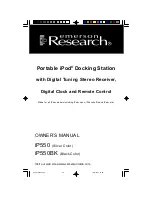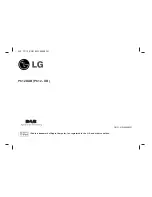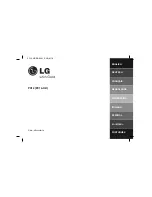
Page
43
SENSOR MAINTENANCE
RAIN GAUGE
Inspect and clean every two to three
months - removing leaves, debris, etc.
In extreme environmental conditions it
may be necessary to do this on a
MONTHLY basis.
•
Check that the tipping mechanism
moves freely and that it registers
0.01 inches per tip.
•
Check and Re-Level the Rain
Bucket, if necessary.
•
Calibrate the Rain Gage every 2
years.
Calibrating the Rain Bucket:
•
Secure a metal can that will hold at
least one quart of water.
•
Punch a
VERY SMALL HOLE
in
the bottom of the can.
•
Place the can in the top of the funnel,
of the Rain Bucket, and pour 16 fluid
ounces (1 pint) of water into the can.
•
If it takes
LESS
than 45 minutes for
this water to run out, the hole in the
can is
TOO LARGE.
•
One hundred (100) tips plus or
minus three tips should occur and
register from 0.97 inches to 1.03
inches. (0.01 inches per each tip).
Adjusting screws are located on the
bottom of the Rain Bucket, adjacent to
the large center drain hole. Adjust both
screws the same number of turns or
partial turns. Rotation clockwise
increases the number of tips per 16
ounces of water, counter clockwise
rotation decreases the number of tips per
16 ounces of water.
One half turn
of
both screws causes a
2% to 3% change
.
•
Check and Re-Level the Rain Bucket
lid.
Factory Calibration is available through
your Rain Bird Distributor.
Suggestions:
Devices for dripping water are available
through a chemistry equipment supply
house.
In order to see the 100 tips, configure a
FAKE weather station within the
weather software, to use for this testing.
Drip the water and then do an upload
using the new test configuration to see
the number of tips (0.01 inches = 1 tip).
CAUTION !
Be sure to
disable
any
Automatic Uploads
, since the 100 tips
will contaminate the every day weather
data.
After the calibration is complete, reset
the datalogger by removing the power
and the battery connections in the
Enclosure.
Contact Campbell Scientific
for further instructions.
You will have
to reset the time of day and year in the
datalogger by up loading one day of data
(#6 from the Weather Main Menu). The
7 days of data that are stored in the
datalogger will be lost when you
disconnect the power, so be sure to have
done an upload before you begin the
calibration process.
Summary of Contents for WS-PRO
Page 2: ......
Page 10: ...Page viii...
Page 16: ...Page 6 FIGURE 2 MAGNETIC DECLINATION FOR THE CONTIGUOUS UNITED STATE...
Page 21: ...Page 11 FIGURE 4 CONCRETE BASE DETAIL FIGURE 5 ANCHOR BOLT TEMPLATE DETAIL...
Page 24: ...Page 14 FIGURE 6 EXTERNAL WIRING DETAIL AT THE PRO SH WEATHER STATION...
Page 27: ...Page 17 FIGURE 7 EXTERNAL WIRING DETAIL AT THE PRO PH WEATHER STATION...
Page 33: ...Page 23 FIGURE 10 SOLAR PANEL INSTALLATION DETAIL...
Page 35: ...Page 25 FIGURE 11 CROSS ARM MOUNTING INSTALLATION OF 034A WIND SENSOR...
Page 48: ...Page 38 FIGURE 21 INSTALLATION AT CENTRAL COMPUTER FOR DIRECT CONNECTED WEATHER STATION...
Page 50: ...Page 40 FIGURE 22 INSTALLATION AT CENTRAL COMPUTER FOR TELEPHONE CONNECTED WEATHER STATION...
Page 73: ...Page 63 FIGURE 28 TYPICAL 3 ROD GROUNDING GRID DETAIL...
Page 75: ...Page 65 FIGURE 30 TESTING OF SOLAR RADIATION SENSOR...
Page 76: ...Page 66 FIGURE 31 TESTING OF RAIN GAGE...
Page 77: ...Page 67 FIGURE 32 TESTING OF TEMPERATURE RELATIVE HUMIDITY SENSOR...
Page 78: ...Page 68 FIGURE 33 TESTING OF AIR TEMPERATURE PROBE...
















































